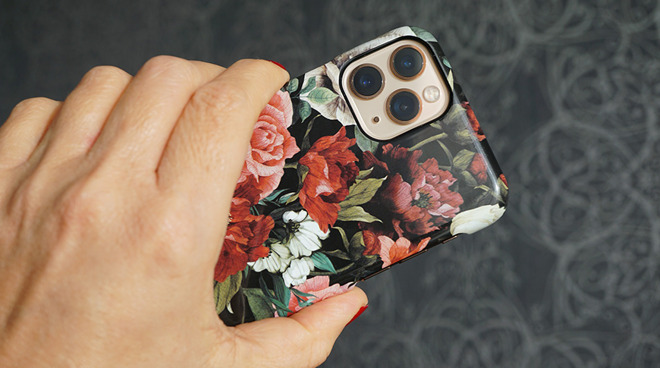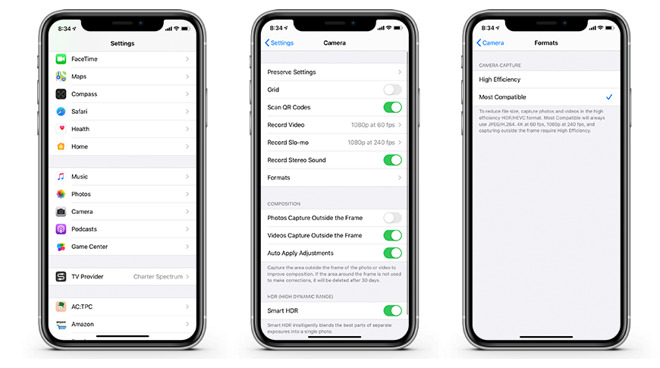Students failing college AP test due to unsupported HEIC iPhone photo format
High school students are failing their college entry exams when uploading photos shot with an iPhone or iPad and photos saved in HEIC format, forcing many students to retake the exams.

For all the ways technology makes our lives better, occasionally it ends up being the core cause of our problems. Recently, thousands of college students have found themselves failing their college AP exams when attempting to upload images from iPhones and iPads produced from 2017 onward.
The Verge reported the story of Nick Bryner, a high school senior in California. Bryner had chosen to take a picture of his handwritten answer and upload it to College Board's -- the administrator of the AP exam -- website.
Unfortunately for Bryner -- and thousands of other students -- the upload would timeout. Once the test timer reached zero, students would auto-fail, and were told they could retake the test in three weeks.
As it turns out, the problem is the iPhone -- and some newer Android phones as well. The issue arises when a student attempts to upload an image that has been captured in HEIC, a high-efficiency format, to College Board's site.
HEICs are smaller than comparable image formats, which enables users to store more images on their phone or in the cloud. The downside is that HEIC photos aren't widely supported.
College Board only accepts JPG, JPEGs, and PNG images. Additionally, their site does not attempt to convert HEICs to a compatible file format automatically.
College Board is now working with students to help them submit their answers without fear of automatically failing. They've opened up additional support for those who have issues uploading their answers. They also point out that less than one percent of students have had this particular issue.
Of course, all of this can be avoided by simply changing the photo format your iPhone uses. This process can be done in a few seconds.

How to change the default iPhone photo format

For all the ways technology makes our lives better, occasionally it ends up being the core cause of our problems. Recently, thousands of college students have found themselves failing their college AP exams when attempting to upload images from iPhones and iPads produced from 2017 onward.
The Verge reported the story of Nick Bryner, a high school senior in California. Bryner had chosen to take a picture of his handwritten answer and upload it to College Board's -- the administrator of the AP exam -- website.
Unfortunately for Bryner -- and thousands of other students -- the upload would timeout. Once the test timer reached zero, students would auto-fail, and were told they could retake the test in three weeks.
As it turns out, the problem is the iPhone -- and some newer Android phones as well. The issue arises when a student attempts to upload an image that has been captured in HEIC, a high-efficiency format, to College Board's site.
HEICs are smaller than comparable image formats, which enables users to store more images on their phone or in the cloud. The downside is that HEIC photos aren't widely supported.
College Board only accepts JPG, JPEGs, and PNG images. Additionally, their site does not attempt to convert HEICs to a compatible file format automatically.
College Board is now working with students to help them submit their answers without fear of automatically failing. They've opened up additional support for those who have issues uploading their answers. They also point out that less than one percent of students have had this particular issue.
Of course, all of this can be avoided by simply changing the photo format your iPhone uses. This process can be done in a few seconds.

How to change the default iPhone photo format
- Open the Settings app
- Scroll down and tap on Camera
- Tap Formats
- Tap "Most Compatible"

Comments
To re-iterate: the problem is a test maker that hasn't bothered two check if their web app works with iPhones for three years. Period.
If it detects .heic, all well and good. If it doesn't, then convert to .jpg. In fact .jpg should really be default anyway, since iOS converts the format to .jpg when sending to something that isn't an iOS device or a Mac as it is, but apparently not in Safari.
The absolute minimum responsibility of any software is to tell the user about failures so the user can then try to correct the problem. If the user has limited time to correct it, not only are error notifications required, they must be timely.
Problems like this never have just one cause. Apple attempting to send an HEIF file by default is bad. The application should support HEIF, as it's hardly a new format. Still, the site not telling the user the upload or processing failed is worse, without question.
They did not test taking photos outside of their app and then uploading from the Photo Library, which is what broke.
I'm with Apple on much of this: The user should not have to care what format the photo is taken with. They took a photo, it's on the phone, they uploaded. There is no reason to expose file formats and make it clunky.
College Board should have tested photos taken outside of their own app. It never occurred to them to do this.
They should have checked file extension and file headers and posted an error message with a solution rather than timing out.
And Apple should work to spread HEIC more widely as Google has attempted with webm.
We can niggle at the way Apple handles the format but the web page just being allowed to time out without a suitable error message AND slamming the door on a way for students to fix the problem is unreasonable.
If you are going to allow web uploads you have to test them properly. This kind of issue should never have reached userland. It isn't the result of a bug, it is the result of poor testing procedures.
The testing organization deserves much more of the fault. Beyond just their lack of test coverage (irony!), if they had simply made the user aware that something went wrong with the upload, the user would have had a chance to fix it. Instead, "The website got stuck on the loading screen until [the student's] time ran out." That is the biggest problem, because a lack of error reporting (or low-quality "Something went wrong" errors) turns inconveniences into breakers.
College Board is just another app... albeit an app with the clout to DIRECTLY affect people’s lives. They should have tested, and they’ve been caught with their pants down.
Having said that I have no doubt that (eventually) the College Board will make good for those students. Asking them to retake a high stakes exam because their IT team didn't account for an edge condition outside the control of the student is unacceptable, and I'm sure the College Board leadership agrees with this. I'm sure the IT guys are pointing the finger at Apple, but I doubt they'll be able to pass the buck.
(I speak from professional experience working for an organization involved in high stakes educational testing.)
If you create a process for anything you are 100% responsible for verifying and telling your customers what you think it works on, what you think it it doesn't work on, and make no claims about everything else prior to deploying it to your customers, because you tested it. If you tested it with an iPhone 5 you tell your customers that you tested it with an iPhone 5. You can't assume it works with anything other than exactly what you've tested it with. Everyone knows what they say about making assumptions...
That said... we've all been burned by this compatibility ass bite at one time or another, as both a vendor and as a customer. Whether it was compatibility of your website with a new browser version, or "surprises" that cropped up in your app after an OS or framework service pack was released, things got broken and people got mad. As a customer you've been on the mad side plenty of times even if you're a vendor or developer.
There's no good side of this problem, even when you are the developer and explicitly state your app's compatibility "constraints" so to speak, your customers who've been impacted won't be happy even if you are technically "abso-friggen-lutely right." If you value your customers, you'll apologize nevertheless, and hopefully everyone will calm down and move on. Some people won't move on, they'll be rehashing their grievances to their grandkids 30 years from now. Hey, you can't please everyone.
Like it or not, this is the one of the prices of "progress" in technology. Shit happens and things break. If you can't handle getting your toes stepped on every now and then, buy some steel toed shoes.
As far as the Covid relationship, I don't get it. Any disruption of any kind, manmade or natural, often results in processes being done for the very first time. Anything done for the very first time and/or inadequately tested is bound to have issues. So you fix them and are hopefully you're better prepared for the next time something disruptive happens. But in all likelihood you'll uncover different broken things the next time. Yeah, if life was perfect and nothing bad ever happened, we would never have to worry about anything. That's not the world we live in. That's why they make steel toed shoes.
Anyway, this only affected a very tiny amount of users, and a work around has now been found, so this is a non issue.